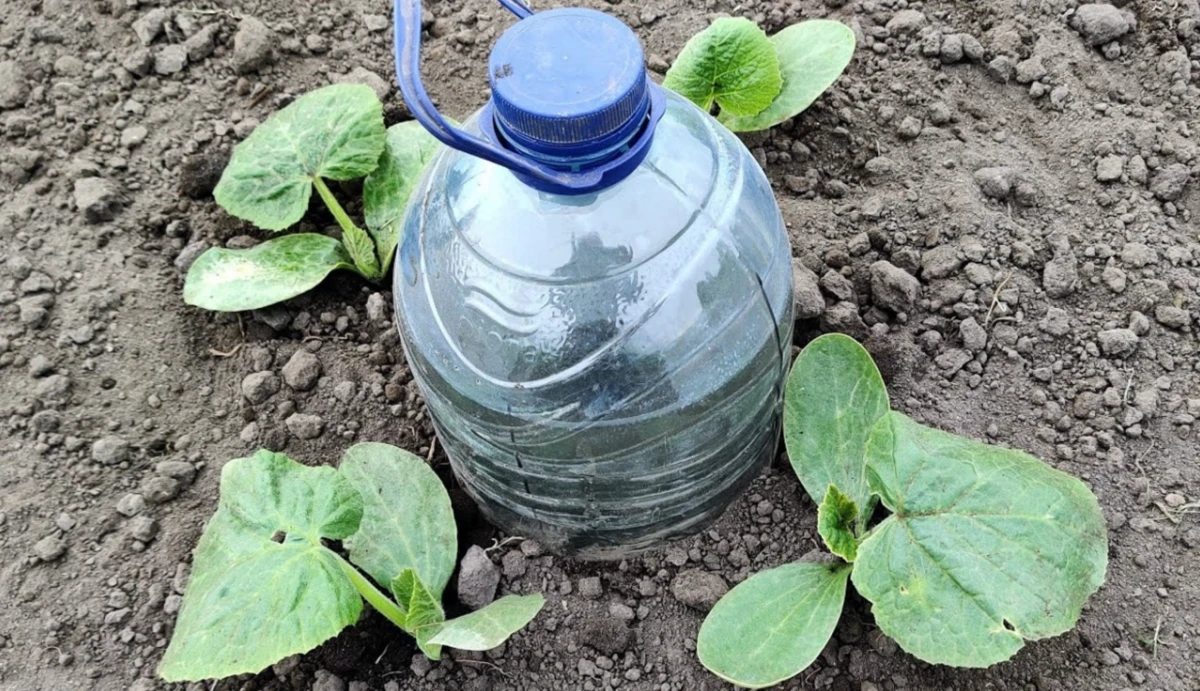Creating a DIY automatic watering system for your vegetable garden using plastic bottles is a practical, eco-friendly solution to keep your plants hydrated, especially when you’re away. This method is particularly effective for tomatoes, but it can also be adapted for other plants that need consistent watering. Here’s everything you need to know to get started!

Why Use Plastic Bottles for Watering?
Using plastic bottles for watering is simple, cost-effective, and ideal for minimizing waste by recycling bottles you already have. This method helps deliver a steady water supply to plants, ensuring the soil stays moist without over-watering. It’s perfect for vegetables like tomatoes, which benefit from even moisture levels to prevent issues like cracking and blossom-end rot.
Step-by-Step Guide to Creating a Bottle-Based Watering System
- Choose the Right Bottle
Select a plastic bottle with a capacity of 1-2 liters, depending on your plant’s size and watering needs. Clean it thoroughly to remove any residue. - Prepare the Bottle for Drip Irrigation
- Hole Drilling: Use a small nail or drill to make tiny holes in the cap of the bottle. The number and size of holes determine the water flow; start with 2-3 small holes for slow, steady drips.
- Additional Holes: For drier soils, consider adding one or two small holes near the bottom or sides of the bottle to help release water more evenly. This works especially well in hot weather, where the soil dries out faster.
- Bury the Bottle
- Dig a hole near the base of your tomato or vegetable plant, deep enough so that about half of the bottle can be buried, with the cap end facing down.
- Place the bottle in the hole and fill it with water. Bury the lower half, leaving the top exposed so you can easily refill it.
- Fill and Monitor
- After placing the bottle, fill it with water and monitor the flow rate. If it’s too fast, reduce the number or size of the holes.
- Adjust as necessary to ensure your plants receive the right amount of water without the risk of dry spells or over-saturation.
Benefits of Using an Automatic Bottle Watering System for Tomatoes
- Consistent Moisture: Tomatoes are sensitive to uneven watering, which can cause cracking. The drip irrigation system helps maintain stable moisture levels.
- Saves Water: This method delivers water directly to the plant roots, reducing evaporation and runoff.
- Ideal for Hot Weather and Vacations: You won’t need to worry about your plants during high-heat days or while you’re away since the bottle provides a steady water source.
Additional Tips for Success
- Adjust for Soil Type: Sandy soil drains quickly, so consider adding more holes or refilling bottles more often. For clay-heavy soil, fewer holes may be sufficient.
- Experiment with Different Bottles: Depending on the plant size and location, you might find that smaller or larger bottles work better.
- Try Adding a Nutrient Boost: Occasionally, mix in a natural fertilizer like compost tea with the water for added nutrition.
By following this guide, you can create a simple, effective, and sustainable way to keep your tomatoes and other vegetable plants well-watered all season long. Happy gardening!
